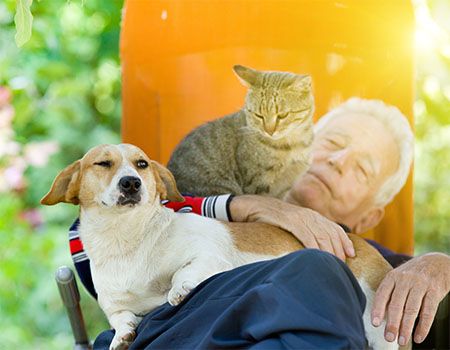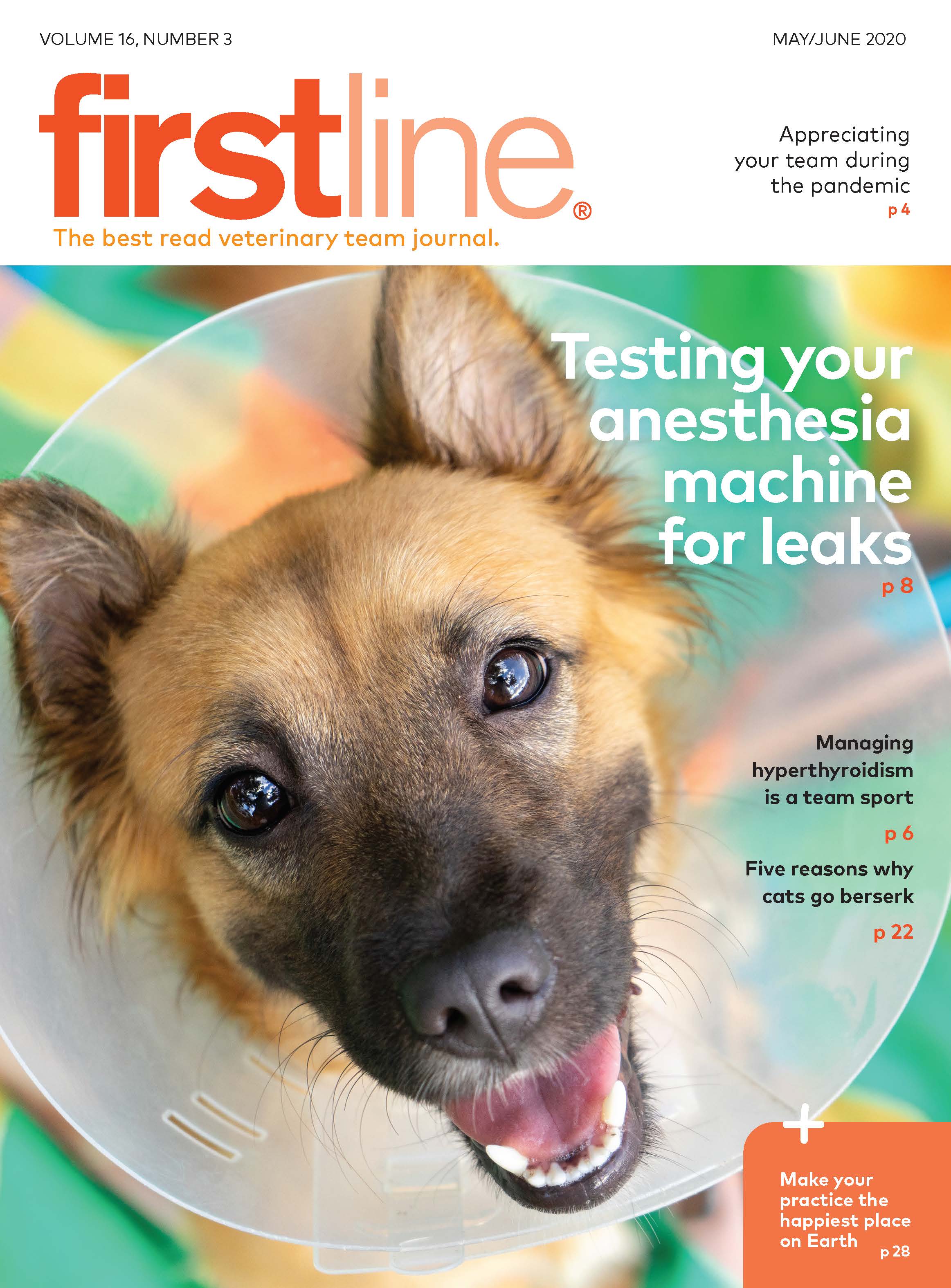When a new dog is too much for an older client
How does your veterinary team help a client whos adopted a dog thats a little too much for them? Educate, support, and be kind.
Budimir Jevtic / stock.adobe.com

You walk into the treatment area after lunch, and the team is talking: “I can't believe he got a puppy! He's being hauled everywhere by that thing already. What was he thinking?” You keep walking and peek into the exam room window. Mr. Jones got a new chocolate lab puppy. You're not sure how old Mr. Jones is, but you think at least mid-70s. You know he isn't steady on his feet, and you remember more than one occasion on which you helped load him and his elderly dog into his old Ford truck. “Thank you kindly,” he would say with a smile. “We aren't as young as we used to be.”
‘Thank you for being with me today. With me and Joe.'
You're very fond of Mr. Jones. He's been coming into your clinic for as long as you can remember with his chocolate lab “Joe.” They'd became fixtures for a while, because Joe was coming in for cold laser therapy to help his aching hips when the anti-inflammatory medication Mr. Jones was faithfully giving just wasn't cutting it anymore.
“Neither of us move that well anymore,” Mr. Jones commented, rising slowly to take the leash from your hand after what would be the last treatment. “Can I get some of that laser therapy?” His eyes sparkled, and he laughed like it was the first-rather than the fifth-time he told you that joke. You remember the sadness that suddenly came over his face as he continued, “I think it's just about time.”
You were the technician assigned to help with Joe's euthanasia procedure. After completing the requisite paperwork, you looked up at Mr. Jones, his eyes welling with tears.
“Thank you for being with me today. With me and Joe,” he said. “My Ruthie-remember her?-she passed away last year. I think she'd be glad you're here with me. I know Joe is. Go see Ruthie, Joe, give her a kiss for me.”
Mr. Jones left your office wiping his face with a worn handkerchief. He asked to hug you goodbye before he left. You thought he'd never let go.
He needed connection. He was lonely.
Mr. Jones' new puppy barks happily, and you're snapped back to reality. He smiles at you through the door and motions for you to come in.
“I'm so glad you're here! Meet Mr. Little Bit!” As you sit and talk to your elder-statesman client, you find out his house was just too quiet so he'd taken to going to the park for walks alone. “But no one spoke to me when I walked by myself like they did when old Joe was around. It was like I was invisible.”
He longed for interaction, he says, so he got Mr. Little Bit. Your heart melts as you listen. You can't fault his reasoning. He needed connection. He was lonely.
While Mr. Jones is fictional, I had a conversation like this with a client recently. He had a lab and replaced it with a labradoodle to deal with the excruciating loneliness he experienced daily in the time between the passing of his old companion and bringing home his new one. The problem was, he couldn't handle the new dog. I bet you've seen similar situations play out in your clinic.
People need connection, and our companion animals can meet many of those needs. As Mr. Jones stated, people were more willing to interact with him when he had a dog. People with pets are also more active, which keeps pet owners healthier longer. They're happy with the increased “feel-good” hormones and reduced cortisol. With retired and older pet owners, the dog gets the payoff of a companion almost every hour of the day. It's important for both the human and the canine companion. So how can you work to create a win-win for your elderly clients?
How to help an older pet owner manage a high-energy new pet
Be open to conversations about new pets when the elderly pet is failing. Gently ask older clients if they've considered what they're going to do when their pet passes. Some clients know they don't want another pet. Some aren't so sure. Let them know you'd be happy to set aside time to help them select an appropriate breed when the time is right. Normalize these conversations. Role-play with your veterinary team members how to start these conversations. Let your clients know that pets are a huge part of life, and ask how you can help them through the process.
Make a handout. Create a brochure or printable item for clients with tips like, “Consider an older dog” or “Consider a smaller breed.” Mr. Jones would probably have loved a King Charles spaniel-loving, loyal, happy to please … and small.
Connect clients with help. Provide pet owners with lists of dog walkers (some larger cities offer dog runners) as well as positive-reinforcement-based dog trainers. Look into doggie daycares in your area and ask them for senior discounts to account for these clients' fixed income as well as a new pet's need to be social and active.
Check in on these clients. When you know an older client has a potentially difficult-to-handle dog, set reminders to call and check in with them. Offer support without judgment.
Pitch clients on foster care. Suggest they become foster parents until they're ready to adopt another companion. Many older clients become wonderful foster help as they find the perfect companion they didn't even know they were looking for!
Share stories and articles. Post content about options after pet loss on your website and in social media. Again, seek to normalize the conversation.
Find grief support. Suggest they join a grief sharing group for pet loss. They're popping up in cities near you. Not there yet? Reach out to mental health clinics and suggest they add one. The act of attending the group can help meet a need for community interaction.
Remember, these conversations are important
When a strong dog doesn't get the proper training, the pet can become too much for the owner. What happens when it's too much for the owner? These dogs may be rehomed, but often they wind up in shelters and the elderly owners find themselves alone and even more discouraged.
It's important that we seek to understand. While we may not think an adoption choice was a wise one, it's not ours to make. We can become part of a solution if we just take the time and forearm ourselves with talking points to take to our clients as the situations arise.
Remember this as well: If we're lucky, we'll all be old people with dogs one day-and we'll want to be understood as well.
After 10 years working in the veterinary field as a veterinary assistant and trainer, Julie Mullins has now felt the call back to school to complete her education. She completed her Bachelor's in Psychology and her Masters in Professional Counseling at Liberty University. She is passionate about helping individuals and families achieve healthy functioning and is convinced that animals should be a part of that journey. Julie observed the power of the human-animal bond while in the veterinary field and has further witnessed the power of the presence of her own dog, Ed, in the counseling sessions she conducts. Julie is also a grandmother, a runner, a business owner, a photographer and a lover of coffee, chocolate, wine and water.
